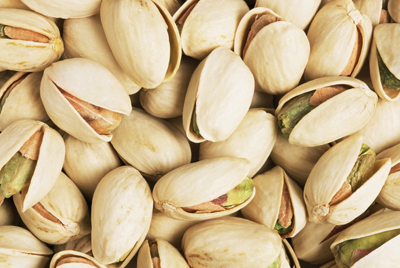
Pistachio is the fruit of Pistachio vera tree. It is a yellow-green colored nut found inside a hard,naturally beiged colored shell. Pistachio 'nuts' are actually seeds of red or yellow plum-like fruits whose flesh is removed during processing. However, everyone calls them a nut because they look like 'nuts' and belong to the cashew family. Other things in the cashew family include sumac, mangos, and poison ivy.
The nut is a great source of, thiamine, Vitamin B6, Vitamin A, folate, calcium, potassium, iron, zinc, selenium, magnesium, and copper. In fact, pistachios contain more magnesium and copper than potatoes, milk, or bread. Pistachios are rich in phytosterols that lower blood cholesterol levels and also have the potential to prevent cancer. They are also rich in dietary fiber: in fact, an ounce of nuts contains more fiber than half a cup of spinach.

Pistachio nuts have a delicate, subtle flavor that is wonderful either for eating out of hand or for flavoring both sweet and savory dishes.
The tree gum is used to make blood-clotting agents and also to treat periodontal diseases. In folk medicine, the pistachio is a cure for liver and other abdominal complaints, chronic cough, abscesses, sores and vascular insufficiencies. Pistachio leaves are a fertility drug in the folk medicine of Lebanon, and, in much of Arabia, the nuts are thought to have aphrodisiacal properties.